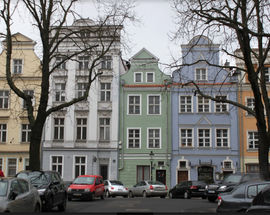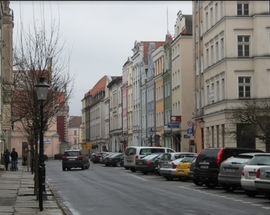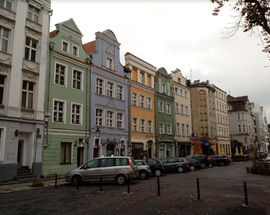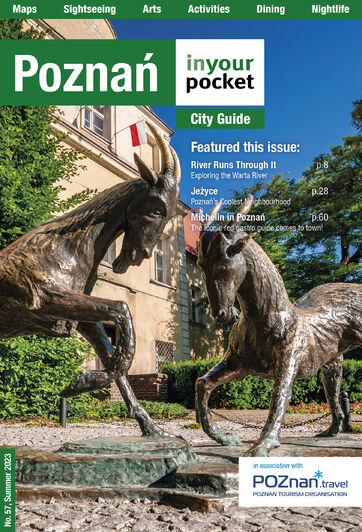Żydowska Street
While here, keep an eye out for the former Salomon Beniamin Latz Home for the Elderly and Infirm (ul. Żydowska 15/18). Established in 1908 after the Latz foundation swapped properties with the Jewish Community, the home took the place of three synagogues that used to exist at the address; meanwhile, the foundation’s former hospital at ul. Wroniecka was torn down to make room for the New Synagogue. If you manage to get in (the building is currently residential), traces of the in-house synagogue’s balcony can be seen in the stairwell. Another building of note is the former Jewish Library at ul. Żydowska 32, founded in 1904.
Closer to the market square, the unassuming Church of the Most Holy Blood of Jesus (ul. Żydowska 34) is a testament to the vicious anti-Semitism that plagued the city for much of its history. As the sordid story goes, in 1399 several local Jews managed to get ahold of Christian sacramental bread and desecrated it by placing it on a table and stabbing it with a knife, whereupon blood burst from the wafers. Terrified, the Jews attempted to bury the hosts, only to find that the stubborn things would magically unbury themselves and float about in the air. When a young shepherd found them floating above the marshes, a chapel was erected at the site - later rebuilt as the Corpus Christi Church - and the perps were harshly punished. This fabulous yarn was passed down amongst the city’s Christian populace for centuries, and when a mysterious blood-stained table was found hidden in the building at ul. Żydowska 34 in the 17th century, it was immediately deemed to be the piece of furniture involved in the infamous act of sacrilege and carried to the Corpus Christi Church in a procession of several thousand. The building itself was transformed into the Church of the Most Holy Blood of Jesus; dare to venture inside and you’ll be greeted with an 18th-century fresco portraying the Jewish trio at their nefarious task assisted by none other than the Devil. The only good thing we can say here is that an antique plaque referring to the profanation of the hosts, which used to adorn the church’s facade, was taken down in 2005 by the archbishop; better late than never.
Associated Venues
/poznan/the-holy-blood-of-lord-jesus-church_42318v
The Holy Blood of Lord Jesus Church is a rector church of the St. Stanislaus Parish. It was founded in the 18th century in a tenement house where, according to legend, Jews profaned stolen communion bread in 1399. The exterior walls of the former tenemen






Comments